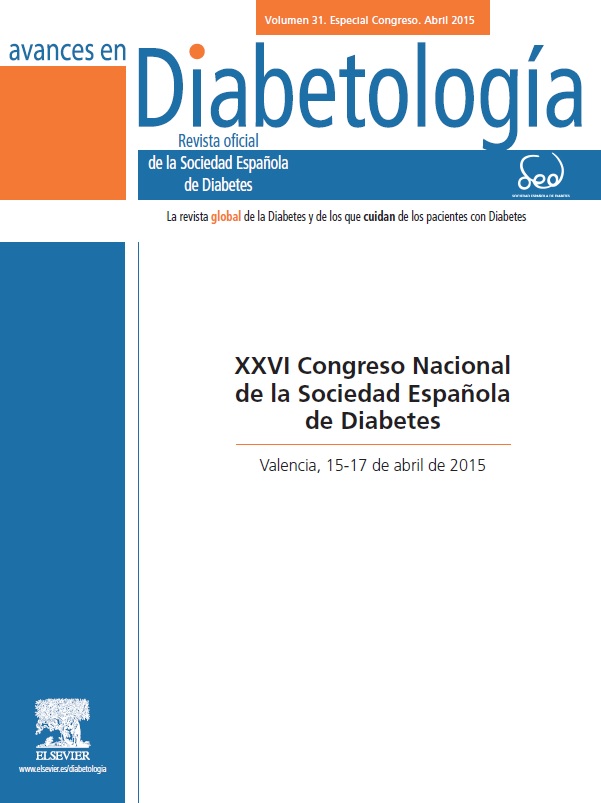P-091. - THE LIFESTYLE OF ADULTS AND ELDERLY TYPE 2 DIABETICS IN BRAZIL: WHEN TIME DOESN’T TEACH TO LIVE WITH DISEASE
aUniversidad de Nova de Lisboa. Lisboa. Portugal. bUniversidad de Federal de Alagoas. Alagoas. Brasil. cUniversidad de Valencia. Valencia.
As in Western Europe, developing countries experience changes in their population profiles as the elderly population increases. This advance of chronological age is associated with an increased presence of chronic diseases. Diabetes mellitus type 2 (DM2) is one of the most prevalent chronic diseases in the world. The development of the disease is associated with alterations in the mechanisms of secretion and/or action of insulin, which is connected with increasing prevalence of obesity and aging process, where lifestyle is also an important factor. The objective of this study was to evaluate the lifestyle of adults and elderly with DM2 with poor control of the disease from two perspectives: the presence and the time of diagnosis of the pathology. We evaluated 198 individuals aged ≥ 40 years (M = 60.3 ± 10.7 years) where 55.5% were 60 years or older and 62.6% women living in a small city in Brazil. The survey population consists of three groups: control (CTL), individuals without DM2 or any disease in target organs (n = 81); G1, individuals diagnosed DM2 ≥ 1 year and ≤ 5 years (n = 47) and G2, individuals diagnosed DM2 ≥ 10 years (n = 61). For this study we checked the cognitive state by Mini Mental State Exame, body mass index (BMI) and glycosylated hemoglobin (HbA1c). For the assessment of lifestyle and excessive daytime sleepiness (EDS), the Lifestyle Questionnaire and Epworth Scale was applied. All groups showed similar results for the cognitive state (CTL: 24.5 ± 2.3 G1: 23.4 ± 3.9; G2: 23 ± 3.7). The BMI showed significant difference between CTL and DM2 (p < 0.01) characterizing CTL as overweight (CTL: 28.4 ± 5.4 kg/m2) and G1 (32.5 ± 9) and G2 (31 ± 7 kg/m2) as obese, with high levels for HbA1C in G1 (9.1 ± 1.9%) and G2 (8.7 ± 2.2%). Relating to lifestyle, we did not find significant differences between CTL and DM2 (p = 0.05) however, the result indicated the tendency to better lifestyle in CTL (70.3 ± 9.3) compared to people with DM2 (G1: 66.3 ± 11.4; G2: 68.4 ± 10.2). Assessing the EDS, significant difference was observed between CTL and DM2 (p < 0.01) where CTL had the lowest mean total score (7.5 ± 4.3) compared to G1 (10.5 ± 5) and G2 (9.4 ± 4.8). Our results showed that people with DM2 in bad control of pathology presents a lifestyle that contributes less to health and higher EDS. Also, live longer with DM2 doesn’t seem to contribute to changes in behavior of people with DM2. The increase in complaints of EDS in G1 and G2 also suggests that they suffer from inadequate nocturnal sleep, which can contribute significantly to a lifestyle that can negatively affect the health and functionality of people with DM2.





